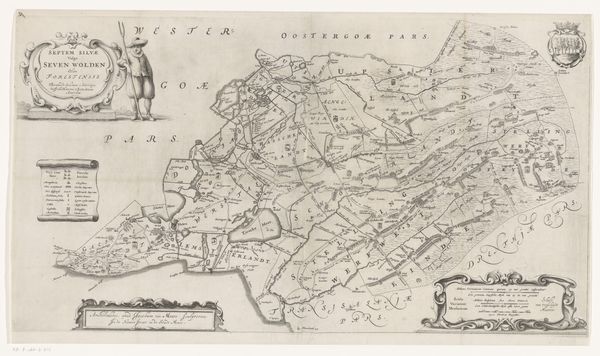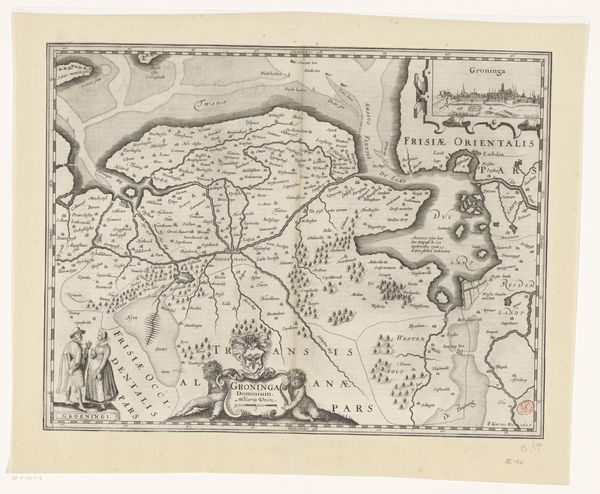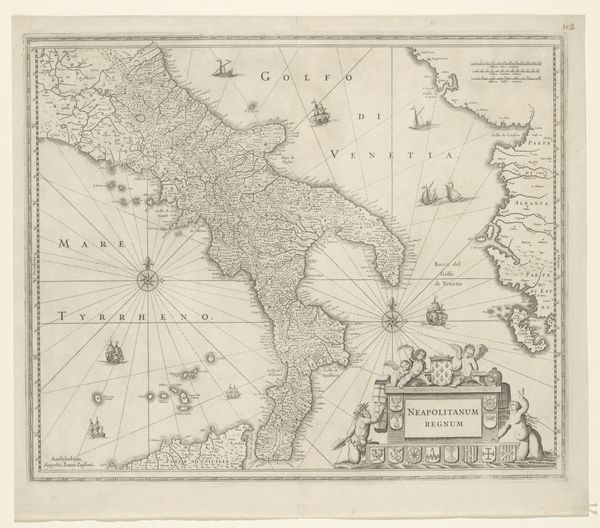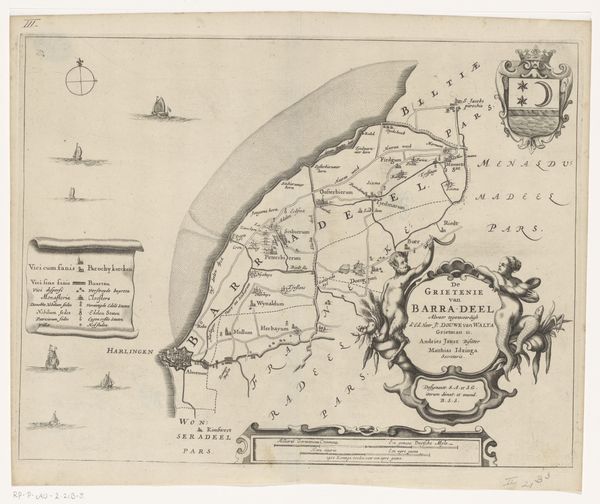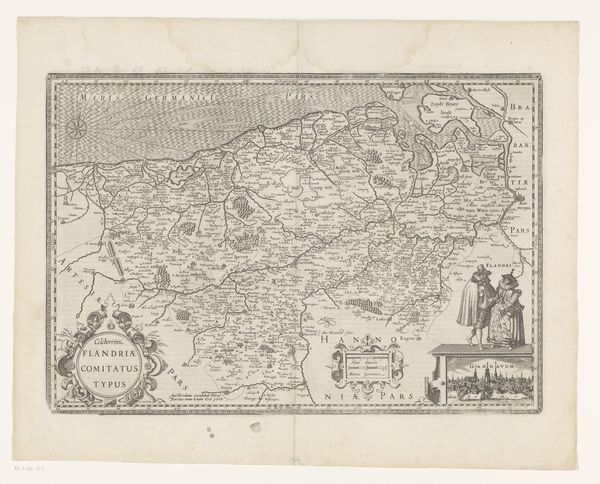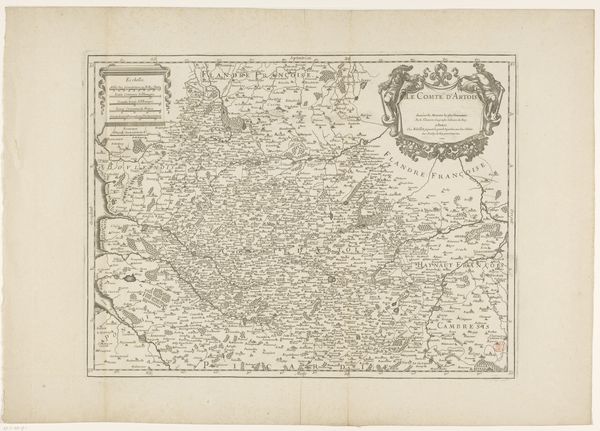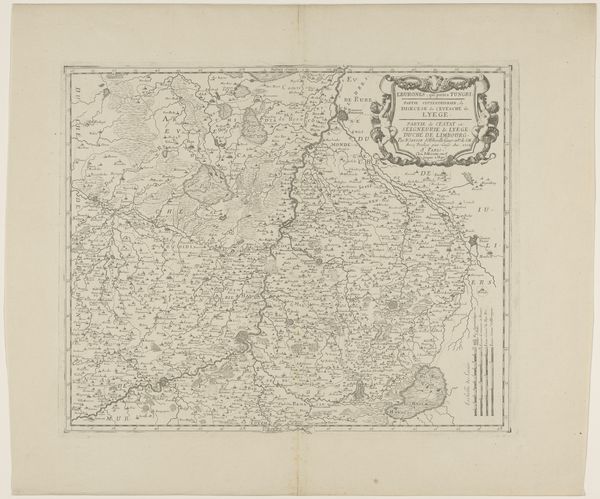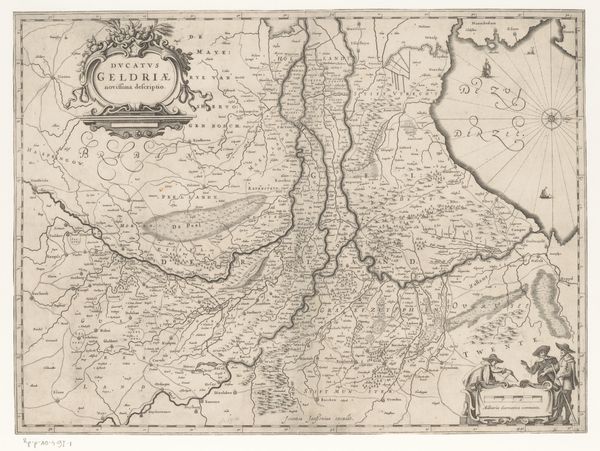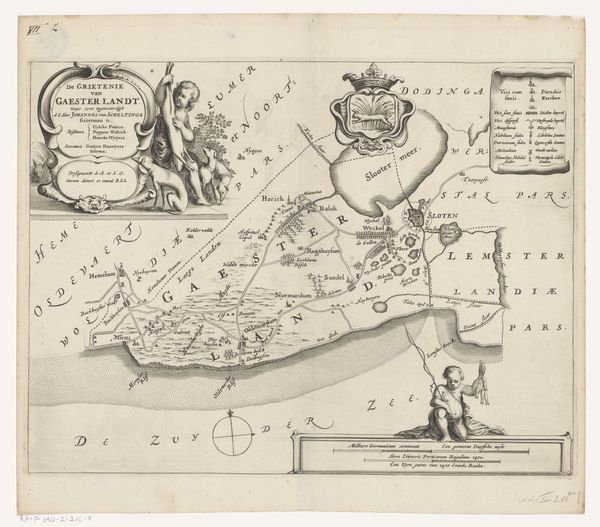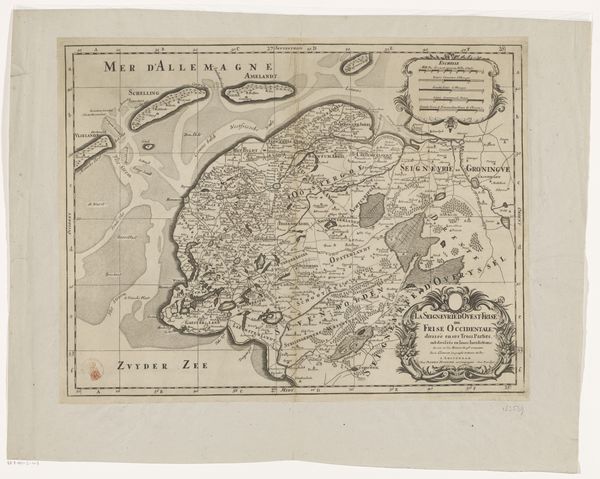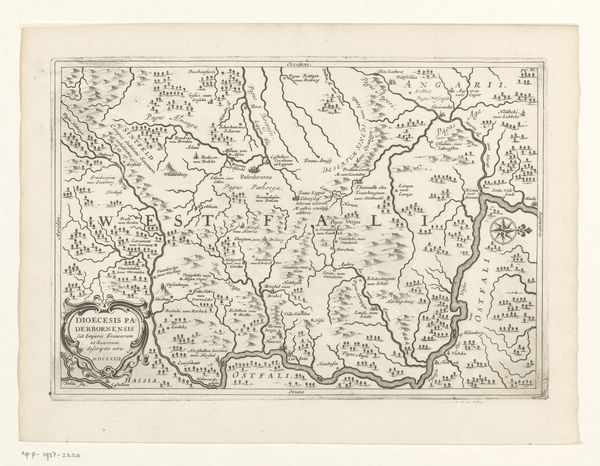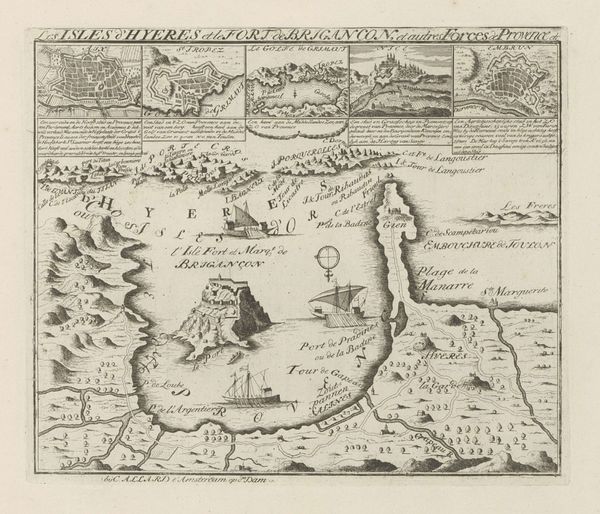
print, etching, engraving
#
dutch-golden-age
# print
#
pen sketch
#
etching
#
old engraving style
#
geometric
#
line
#
history-painting
#
engraving
Dimensions: height 447 mm, width 523 mm
Copyright: Rijks Museum: Open Domain
Curator: Here we have an engraving, "Kaart van de noordoostkust van Amerika," dating back to the Dutch Golden Age, sometime between 1659 and 1666. The Rijksmuseum holds this piece in its collection. Editor: The fine lines and detailed rendering give it an air of precision, but there's also a striking sense of ambition bordering on delusion here. Curator: In what way? It seems fairly straightforward as a map. Editor: Straightforward? Look at the way "Nieuw Nederlandt" is superimposed on Indigenous land. The act of mapping, then as now, is fundamentally about claiming territory. We should think about whose hands created this object and whose story is conspicuously absent. Curator: That's a critical point. The map showcases the Dutch perspective, their aspirations in the 'New World.' It’s less a factual representation and more a projection of colonial power. It is a construct born of a very particular moment and imbued with ideological intent. Editor: Exactly. It presents a carefully constructed image of Dutch influence. The material realities are revealing; the paper itself, the ink, the tools of engraving, all represent European technology used to carve out a vision of dominance. This was a product made for a specific consumer: one eager to imagine themselves as a benefactor. Curator: I see how you center the materiality. Think about the engraving process itself; how physically laborious it must have been to render such detail. This relates directly to the economic and social drivers of that era. Editor: Precisely. And considering the use of this print as a tool for defining geographical boundaries and trading routes, we can understand how maps of this type shaped the course of resource extraction and global commerce. Its artistic appeal belies an object of capitalist expansion. Curator: Understanding how maps perpetuate or challenge systems of power gives this artwork lasting meaning. It urges us to interrogate cartography and the historical underpinnings of our own present day. Editor: Indeed, and by considering both the process of production and the act of consumption, this object forces a reflection on whose perspectives become materialized in history.
Comments
No comments
Be the first to comment and join the conversation on the ultimate creative platform.
